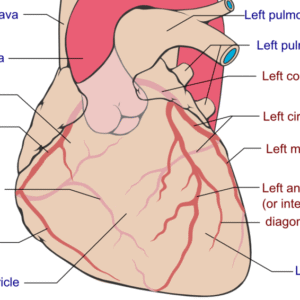Cardiology > Implantable Loop Recorder (Insertable Cardiac Monitor)
Implantable Loop Recorder (Insertable Cardiac Monitor)
Background
An Implantable Loop Recorder (ILR), also known as an Insertable Cardiac Monitor (ICM), is a subcutaneous, long-term ambulatory electrocardiographic monitoring device that continuously records cardiac rhythm. It is particularly useful for evaluating unexplained syncope, palpitations, suspected arrhythmias, and cryptogenic stroke in patients where short-term monitoring has been inconclusive.
ILRs extend monitoring up to 2–3 years, significantly increasing the likelihood of detecting infrequent, intermittent arrhythmias that are not captured on surface ECG, Holter, or external event monitors.
Classification/Types
Traditional ILR Devices
Larger, older generation, implanted subcutaneously.
Miniaturized ILRs
Modern devices (e.g., Medtronic Reveal LINQ, Abbott Confirm Rx, Biotronik Biomonitor).
Smaller, minimally invasive insertion, often performed in an outpatient setting.
Remote Monitoring-Enabled ILRs
Allow wireless data transmission to physicians for early arrhythmia detection and intervention.
Clinical Rationale
Arrhythmias can be paroxysmal and asymptomatic, making short-term monitoring insufficient. ILRs continuously record electrical activity and use algorithms to detect bradyarrhythmias, tachyarrhythmias, or atrial fibrillation. Patient-activated or automatic triggers preserve arrhythmic events for later review, providing critical diagnostic correlation.
Indications
Unexplained syncope or presyncope with suspected arrhythmic etiology.
Palpitations of unclear origin not captured by Holter/event monitoring.
Cryptogenic stroke to detect occult atrial fibrillation.
High-risk patients for arrhythmia requiring long-term surveillance.
Intermittent atrial fibrillation monitoring post-ablation or post-cardiac surgery.
Contraindications
Active systemic or local infection at the implant site.
Known allergy to device components or adhesives.
Patients unable to comply with follow-up or device management.
Diagnostic Yield/Value
ILRs have a higher diagnostic yield than external monitors for infrequent arrhythmias.
Studies demonstrate arrhythmia detection rates of up to 30–40% in unexplained syncope.
Superior at identifying atrial fibrillation in cryptogenic stroke patients compared to conventional monitoring.
Procedure and Technique
Preparation: Antiseptic skin preparation; local anesthesia.
Insertion: Small incision (≈1 cm) in the left parasternal region; device placed subcutaneously.
Activation: Device programmed to detect bradycardia, tachycardia, or AF based on pre-set criteria.
Monitoring: Patients carry a remote transmitter; automatic and patient-activated recordings are stored.
Follow-up: Remote or in-office interrogation for data review.
Physical Exam Findings Correlated
Vital Signs
Bradycardia, tachycardia, or pauses during symptomatic episodes.
General Appearance
Syncope, dizziness, or unexplained transient loss of consciousness.
Cardiovascular System
Irregular pulse suggestive of paroxysmal atrial fibrillation or other arrhythmia.
Neurological System
Stroke or transient ischemic attack (TIA) with suspected embolic source.
Advantages
Long-term continuous monitoring (up to 3 years).
Minimally invasive, outpatient implantation.
High diagnostic yield for rare events.
Remote monitoring facilitates early arrhythmia detection and management.
Limitations
Invasive (though minor) compared to external monitors.
Limited to rhythm monitoring; cannot assess ischemia or hemodynamics.
False positives possible due to noise or artifacts.
Cost higher than short-term monitoring devices.
Complications
Local infection or hematoma at insertion site.
Device migration or erosion (rare).
Pain or discomfort at implant site.
False-positive recordings requiring careful review.
Follow-Up and Clinical Decision-Making
Routine checks: Device interrogation remotely or in clinic.
Treatment guidance: Detection of AF may warrant anticoagulation; bradyarrhythmia or pauses may lead to pacemaker implantation; ventricular arrhythmias may prompt ICD consideration.
Stroke prevention: In cryptogenic stroke patients, ILRs play a central role in uncovering occult AF and guiding secondary prevention.
Stay on top of medicine. Get connected. Crush the boards.
HMD is a beacon of medical education, committed to forging a global network of physicians, medical students, and allied healthcare professionals.

